Southlands Almanac - July 2025
Australian Capital Region
Wheel & Cross is proud to publish this monthly Almanac at the start of each month. It was created to observe and understand the cycle of seasons in the Australian Capital Region, through the lens of European agricultural knowledge and publicly available and openly shared knowledge of the traditional custodians of ‘Capital Country’, the Ngunnawal.
I acknowledge that the Ngambri people also claim custodianship of these lands. Unfortunately, I do not have any Ngambri cultural information regarding language, connection to Country or seasonal customs. This means I am unable to share anything relating to Ngambri culture but I am always keen to learn.
I pay my respects to all First Nations Elders, past and present and to all First Nations peoples from around Australia and the Torres Strait Islands who are the proud custodians of this Country we all love.
Contents
Important Dates in July
Ngunnawal Season - Magarawangga (Deep Winter)
Weather and Climate
Weather Summary - June
Regional Water Storage - June
July and Winter Long-range forecast
Star Gazing and Star Lore
Moon phases - Winter or Frost Moon
Visible planets, meteors and solar movements
Western and First Nations ‘star lore’ - Centaurus
Nature and Environment
Useful weeds - Pine
Native flora - Correa
Native fauna - Eastern Grey Kangaroo
In Season - seasonal crops, flowers and food
Important Dates in June
Source: Department of Home Affairs - Calendar of cultural and religious dates and Wheel & Cross Seasonal Celebrations Digest for June
1 Jul - Lussinatte and Jólabókaflóð
1 Jul - Coming of the Light Festival (Torres Strait Islanders)
5-6 Jul - Ashura (Sunni Muslims)
6-13 Jul - NAIDOC Week (National)
10 Jul - Asalha Puja/Dhamma Day (Buddhist)
15 Jul - Yule
19-21 Jul - Karsa (Mandean)
Lussinatte and Jólabókaflóð - 1 July
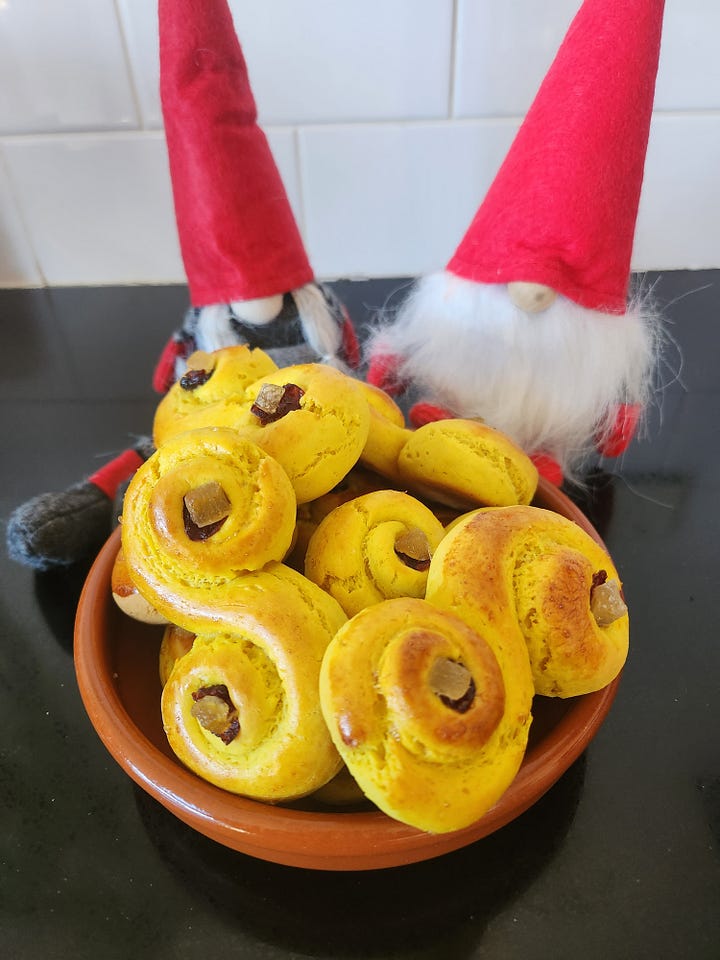
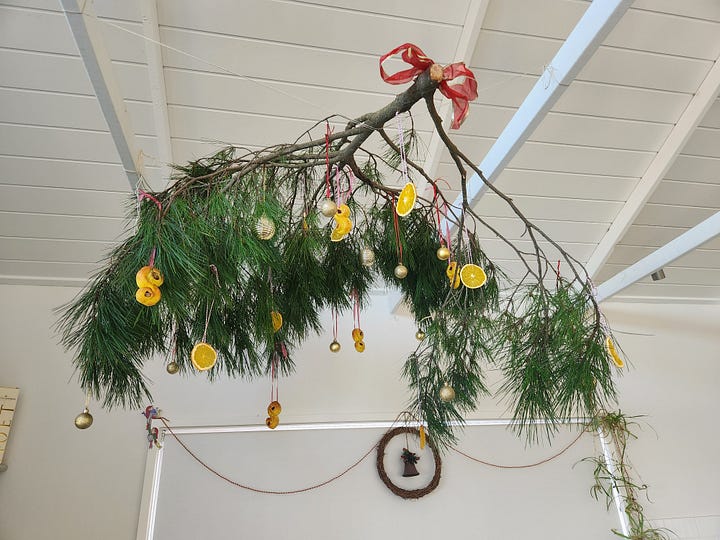
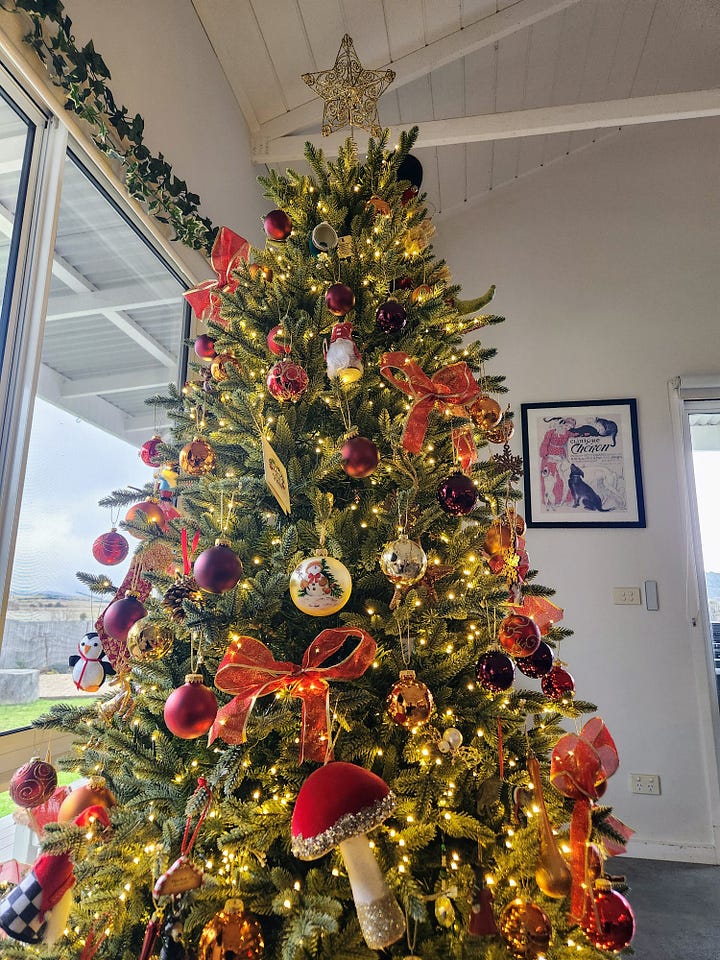

Lussinatte, or Lussi Night, is an ancient midwinter observance from northern Europe celebrated on the first of July, marking the true heart of winter and the beginning of the Scandinavian Jul (Yule) season in the southern hemisphere. The name lives on in Sweden’s St. Lucy’s Day traditions in December, where light-bearing figures in white robes and candle crowns welcome the return of the sun. Still, its roots reach deeper, to the old stories of Lussi, a wild winter spirit who rode through the longest night to judge if each household was clean, tidy and prepared for winter. In my home, Lussinatte is a gentle and joyful threshold: I light candles, bake spiced saffron buns (lussikatter), put up the Yule tree, the podłaźniczka, the badnjak, and deck the halls with evergreen boughs and Yule ornaments. It’s also when I begin preparing for our midwinter Yule party on the Saturday closest to the 15th (midwinter), gathering food, decorations, and stories. For me, Lussinatte is a time to honour the stillness of winter, the old seasonal lore, and the warmth we create together as the light begins its long return.
Alongside Lussinatte, I also celebrate Jólabókaflóð, the “Yule Book Flood,” a modern Icelandic tradition with deep roots in midwinter gift-giving and literary culture. In Iceland, books are traditionally given on Yule (Christmas) Eve, and the night is spent reading by candlelight with a warm drink in hand. In my southern hemisphere home, I’ve folded this tradition into our midwinter season, when the nights are long and quiet, and a good story brings comfort. I like to mark early July by giving or receiving a book, curling up under blankets, and spending the evening reading by the glow of the fire or candlelight, often with a mug of mulled wine or spiced hot chocolate in hand.
This month’s Wheel & Cross Seasonal Celebrations Digest for July is brimming with insights into the history and traditions of the midwinter celebrations of Lussinatte, Jólabókaflóð, along with creative ideas to help you celebrate the season.
Coming of the Light Festival (Torres Strait Islands) - 1 July
The Coming of the Light is celebrated by Torres Strait Islanders. It commemorates the arrival of the London Missionary Society on Erub Island in the Torres Strait in 1871. It led to the adoption of Christianity through island communities during the late 19th century.
Ashura (Sunni Muslim) - 5-6 July
For Sunni Muslims, Ashura marks Noah's departure from the ark and the exodus of Moses from Egypt. It is usually observed by a day of non-obligatory fasting. For Shia Muslims, it marks the anniversary of the martyrdom of the Prophet Muhammad's grandson, Hussein, in Karbala, Iraq and is commemorated with public processions.
NAIDOC Week (Australian) - 6-13 July
National Aboriginal and Islanders Day Observance Committee (NAIDOC) Week is held annually in early July. It is a time to celebrate Aboriginal and Torres Strait Islander history, culture and achievements. It is an opportunity to recognise Indigenous Australians’ contributions to our country and society. This year’s theme is ‘Keep the Fire Burning! Blak, Loud & Proud’.
Asala Puja / Dhamma Day (Buddhist) - 10 July
Asalha Puja Day or the Dhamma Day celebrates the first teaching of the Buddha. This Buddhist event commemorates the first sermon delivered by the Buddha after his enlightenment. This event is one of the most important festivals for Theravada Buddhists.
Yule - 15 July
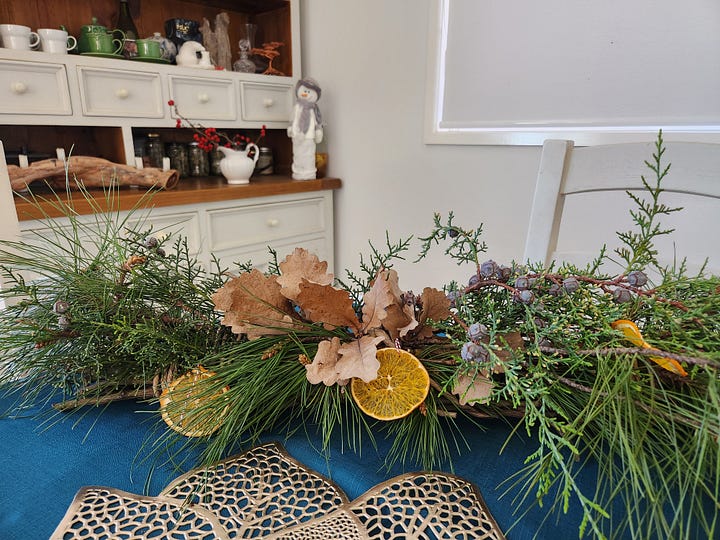
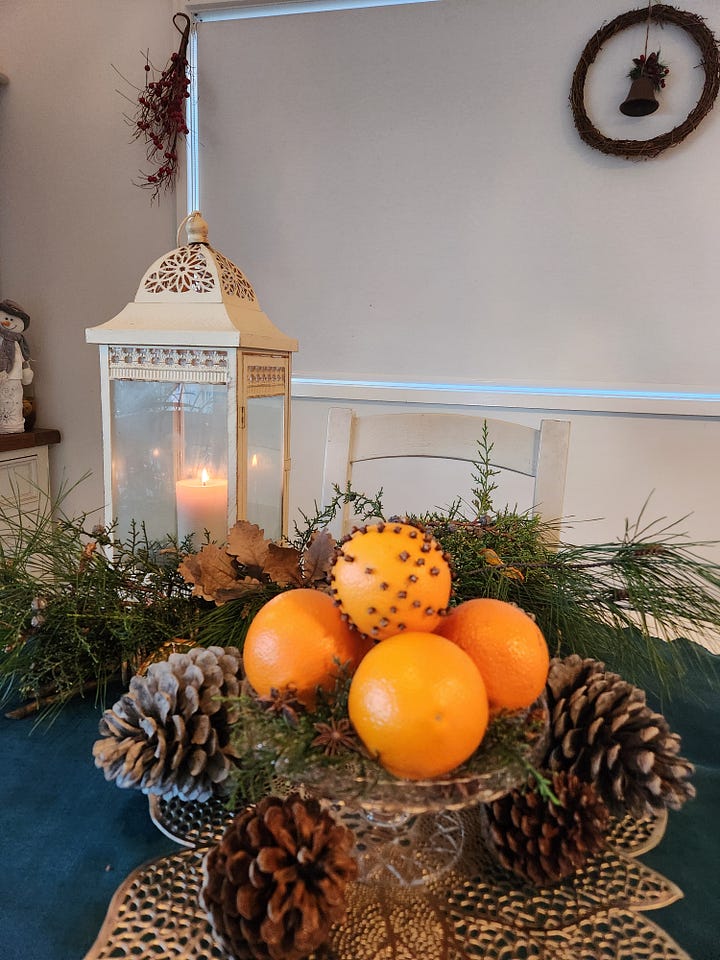
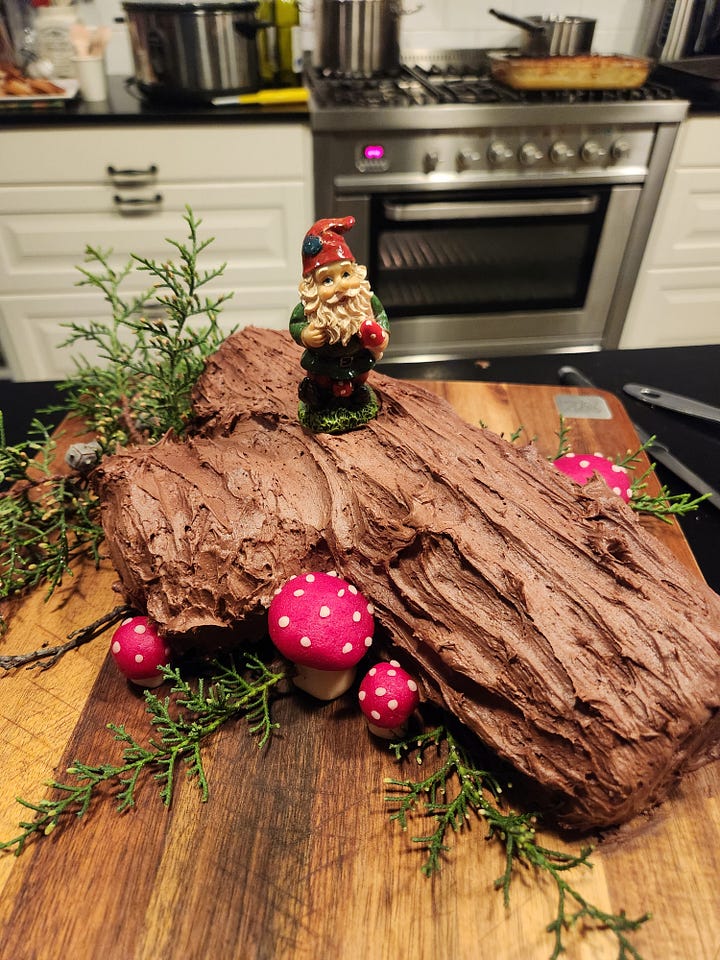
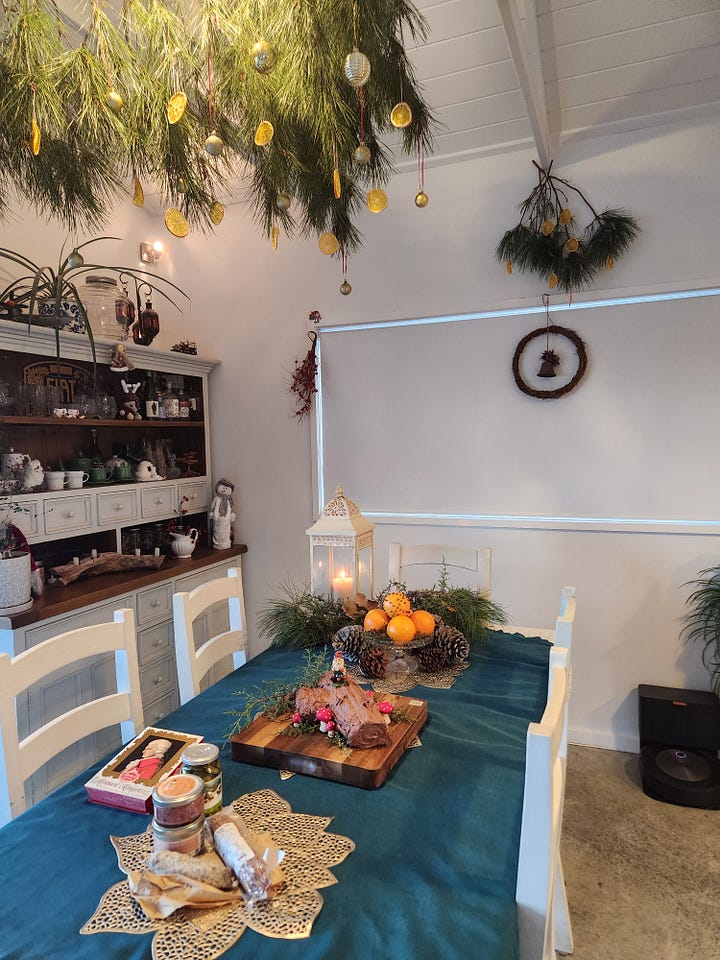
Yule is the heart of the old midwinter festivals, an ancient northern European celebration of the darkest season and the turning of the year. Rooted in pre-Christian traditions, Yule honours the rebirth of the sun, the endurance of life through the cold, and the warmth of community gathered together. In my southern hemisphere practice, I celebrate Yule on the closest Saturday to midwinter (15th of July), with a joyful party, a shared feast, and the burning of the Yule log, a tradition that symbolises light returning and old burdens turned to ash. My home is decorated with evergreen boughs, candles, and handmade ornaments, and we gather to eat, laugh, tell stories, and raise a glass to the turning wheel. It’s a night that holds both gravity and glee: a chance to honour the long winter and all it teaches us, while kindling hope and celebration in the company of others.
This month’s Wheel & Cross Seasonal Celebrations Digest for July is brimming with insights into the history and traditions of the midwinter celebration of Yule, along with creative ideas to help you celebrate the season.
Karsa (Mandean New Year) - 19-21 July
Karsa marks the beginning of a new year for Mandaeans and is spent and celebrated with family. It begins at dusk and ends thirty-six hours later.
Ngunnawal Season - Magarawangga (Deep Winter)
Sources: Tyronne Bell, Ngunnawal Elder, Thunderstone Cultural Aboriginal Services
The Australian Capital Region is part of the Southern Tablelands. It has a cool temperate climate featuring warm to hot and dry summers and cold winters with heavy frosts and radiation fog.
July ushers in the second half of the Ngunnawal season of Magarawangga—deep winter. This time of year is characterised by heavy fogs and sharp frosts, which will persist through to August. Snow begins to dust the Brindabella Ranges and settles more deeply across the Australian Alps and Snowy Mountains. As the chill sets in, early-flowering wattles brighten the landscape with splashes of yellow and cream. It’s also breeding season for echidnas, which was discussed in last month’s article, and for the Eastern grey kangaroo, which we will explore later on in this article.
Weather and Climate
Sources: Australian Bureau of Meteorology, WeatherZone.com.au, Timeanddate.com, Weather Spark, Weather Atlas
Under the Köppen climate classification system, Canberra’s climate is classified as Cfb, denoting a temperate oceanic climate characterised by warm summers, moderate winters and minimal rainfall differences between seasons.
Weather Summary - June
Daytime temperatures in June were close to average, while nighttime temperatures were well below average due to clear skies across much of the region. The Australian Capital Region saw the coldest first month of winter in nearly 20 years, while Canberra had the longest run of cold nights in living memory and the coldest average since records began in 1939.
A strong cold front in early June and a second one in the middle of the month dropped temperatures across the region, resulting in above-average snow levels across the Alpine regions. It has also been a dryer-than-average month with the clear skies assisting the persistence of colder temperatures.
Soil moisture in the Australian Capital Region was near average for June.
Max Temp - The average maximum temperature for June this year was 12.4°C, slightly lower (0.8°C) than the long-term average of 13.2°C. The highest maximum temperature was 16.4C°C recorded on 3 June.
Min Temp - The average minimum temperature for June this year was -2.6°C, lower (-1.5°C) than the long-term average of 1.1°C. The lowest minimum temperature for the month and on record was -7.6°C recorded on 21 June.
Rainfall - It rained over 1mm on 6 days in June, with 5 days receiving less than 1mm for a total of 30mm, less than the June average of 11.6 days and 30.3mm of rain. The highest amount fell on 24 June with 13.2mm of rain.
Water Storage - June
Total water storage levels across the Murray-Darling Basin are around 60% full, 18% lower than this time last year.
Water for the Australian Capital Territory and Queanbeyan in NSW is stored in four dams across two water catchments, managed by Icon Water. These include Corin, Bendora, Cotter and Googong. Storage levels in Canberra are at 91.17% (251.96 GL of 277.84 GL).
Queanbeyan Palerang Regional Council has an agreement with Icon Water to purchase potable water for the Queanbeyan area. The villages of Braidwood, Bungendore, and Captains Flat have their own water treatment facilities for bore water, which serve the urban area of the three towns/villages. Bungendore has reached its water sustaining capacity, and options for a pipeline from Queanbeyan are currently being explored.
Goulburn-Mullwaree Council supplies water to Tarago and Lake Bathurst from the Pejar Dam (9,000 ML), Sooley Dam (6,250 ML), and Rossi Weir (330 ML) via the Goulburn Water Filtration Plant and the Highland Source Pipeline.
The Upper Lachlan Shire Council manages water supply to Gunning via pumping from the Lachlan River into a storage dam (100 ML), then into town through a water treatment facility. No information is available on storage levels. Collector relies on untreated water from rooftop rain collection and local bores.
Water for the Yass Valley Council region, including the town of Yass, and villages of Bowning, Binalong and Murrumbateman, is supplied from the Yass Dam (2,460ML and 15,000 pax capacity). Yass Dam is now at 100% capacity. Gundaroo relies on untreated water supplies from rooftop rain collection and local bores.
July Weather Forecast
Australian Bureau of Meteorology
The weather normally continues to cool in June with average high temperatures dropping to 12.8°C and average lows dropping to 0.1°C. Frosts and fogs are common. Rain over 1mm usually falls for an average of 11.4 days, with 30.9mm of accumulated precipitation.
July rainfall is expected to be near average, although lower-than-average rainfall is expected in the west of the region. Day and nighttime temperatures are expected to be above average for the region.
Sea Surface Temperatures (SSTs) around Australia are expected to remain warmer than average. The El Niño Southern Oscillation (ENSO) and the Indian Ocean Dipole (DMI) are forecast to stay neutral.
Long-range Forecast
The Australian Bureau of Meteorology has released its long-range forecast for July to September 2025.
Star Gazing and Star Lore
Sources: Time and Date, Scitech, Australian Indigenous Astronomy,
Lunar Phases
Thursday, 3rd - First Quarter Moon (waxing) - Rise 11:46 am E, Set 12:58 am W (4th)
Friday, 11th - FULL MOON (Yule Moon)* - Rise 5:17 pm SE, Set 8:16 am SW (12th)
Friday, 18th - Last Quarter Moon (waning) - Rise 11:57 pm NE (17th), Set 11:13 pm NW
Friday, 25th - New Moon - Rise 7:29 am NE, Set 5:36 pm NW
*The names of the full moons provided here generally correspond with names used in old English agricultural calendars and similar American Almanacs, although they have been rearranged according to their appropriate season in the southern hemisphere. See Full Moon Names for the Southern Hemisphere for more information.
Stars, Planets and Meteors
Not all stars in the night sky are scientifically stars. True stars comprise the vast number of what we call ‘stars’. They appear to twinkle as their light comes from active suns in distant solar systems. The other celestial bodies we call ‘stars’ are planets in our solar system, visible from Earth. They shine steadily in the night sky rather than twinkle as they steadily reflect the sun’s light, rather than producing their own light.
Earth reaches aphelion, the point where our orbit takes us furthest from the Sun, on July 3. The aphelion occurs every year in July, but it does not cause the winter cold. Winter is caused by the Earth’s tilt away from the Sun, giving us shorter days and lower sun angles.
MERCURY - is visible in the west, an hour after sunset, for the first few weeks of July.
VENUS - the ‘Morning Star’ continues to shine brightly in the northeastern sky just before dawn. It has a close encounter with Uranus on July 4 as it moves through Taurus, then threads the gap between Aldebaran and the Pleiades a few days later.
MARS - remains visible in the evenings in the northwest sky.
JUPITER - returns to the eastern sky before sunrise, joining Venus.
SATURN - is visible with a telescope, rising near midnight across the ENE sky before fading away at sunrise.
METEORS - no meteor showers are visible this month.
Constellation Feature - Centaurus
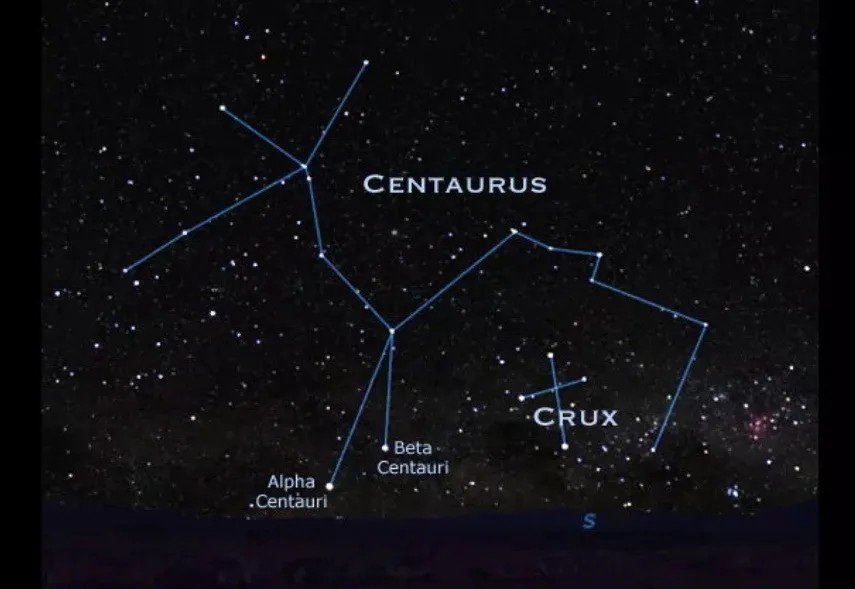
On a clear winter night in July, look up after sunset and you’ll see one of the most impressive constellations in the southern sky: Centaurus. It’s easy to find and packed with some of the brightest and most interesting stars we can see from the southern hemisphere.
The two stars that really stand out are Alpha Centauri and Beta Centauri—known as The Pointers. You’ll find them just next to the Southern Cross (Crux) in the western sky. They’re called the Pointers because they lead your eye straight to the Cross. Alpha Centauri is especially famous; it’s part of the closest star system to Earth, only about four light years away.
Centaurus is also home to something extra special: a globular cluster called Omega Centauri. If you’re in a dark spot, you might notice it as a faint smudge below the Pointers. With binoculars, it becomes a glittering ball of stars—millions of them, packed tightly together. It’s one of the oldest and largest star clusters in our galaxy.
Centaurus is named after a creature from Greek mythology: a centaur, half-human, half-horse. The Greeks imagined it as Chiron, a wise and kind healer and teacher of heroes. Unlike other rowdy centaurs, Chiron was known for his knowledge and care. The story goes that after being wounded, he gave up his immortality and was placed in the sky as a tribute.
But other cultures have very different stories about this part of the sky, and many of them are closer to home.
Across Australia, many First Nations groups see shapes not in the stars themselves, but in the dark spaces between them. One of the most famous is the Emu in the Sky, formed by the dark dust lanes of the Milky Way. In some traditions, Alpha and Beta Centauri mark the eyes or beak of the emu, whose body stretches across the night sky.
For many First Nations such as the Kamilaroi and Euahlayi peoples of northern New South Wales and southern Queensland, the appearance of the emu in winter was a seasonal signal—it meant the emu eggs were ready to collect, connecting the sky directly to life on the land.
Other language groups like the Wotjobaluk people of western Victoria saw Alpha and Beta Centauri as two brothers, Bermbermgle*, who were tracking the emu represented by the nearby Coalsack Nebula.
The best time to see Centaurus is on a clear winter night in July, anytime from sunset to about 10 PM. Around this time of year, it’s high in the western sky just after dark, easy to see without needing to stay up late. The two pointers, Alpha and Beta Centauri, form Chiron’s front hooves, while his body wraps around the Southern Cross.
*The story of Bermbermgle, two ancestral brothers represented by Alpha and Beta Centauri, comes from the Wotjobaluk people of western Victoria and was recorded in the 1880s by anthropologist A.W. Howitt. In this tradition, the brothers hunt the emu represented by the Coalsack Nebula. While this story is often cited in modern cultural astronomy research, it was collected during a colonial period without full cultural context. It should be understood as part of a broader and living Aboriginal knowledge system, and not as a universally shared or current tradition. Contemporary, community-led storytelling is the most appropriate and respectful way to engage with these cultural teachings today.
Other Constellations
Southern Cross (Crux) - sinking in the sky and moving to a downward position on its southwest side. More information in the January issue.
Sky Emu (Milky Way) - rising in the sky with its head moving downwards, indicating the male is incubating eggs that will soon hatch, and the eggs can no longer be collected. More information in the April issue.
Twins (Gemini) - no longer visible in the night sky until the start of summer. More information in the December 2024 issue.
Dog Star (Sirius) and Great Dog (Manis Major) - no longer visible in the night sky until the start of summer. More information in the February issue.
Warrior (Orion) - no longer visible in the night sky until the start of summer. More information in the March issue.
Bull (Taurus) - no longer visible in the night until the start of summer. More information in the March issue.
Seven Sisters (Pleiades) - clearly visible in the east just before sunrise, but won’t be visible in the night sky until summer. More information in the June issue.
Centaurus - high in the southern sky, wrapped around the Southern Cross. See the previous section.
Scorpius - rising higher on the eastern horizon at sunset. More information in May issue.
Sagittarius and Corona Australis - rising higher on the eastern horizon at sunset.
Aquila - rising higher on the eastern horizon at sunset.
Southern Fish (Piscis Austrinus) - appears low on the southern horizon in the night sky.
Nature and the Environment
Useful Weeds (Food/Medicine) - Pine
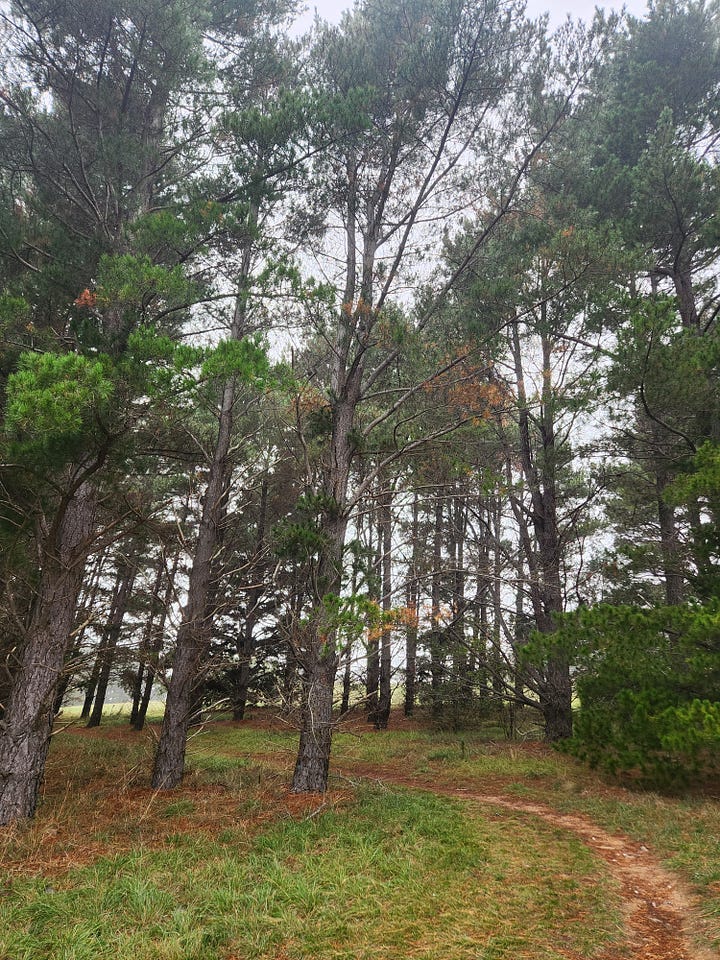
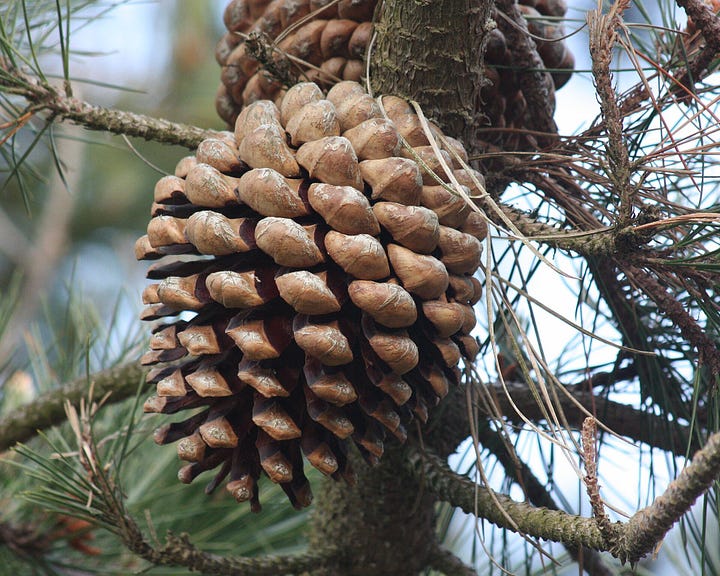
Though not native to Australia, Radiata Pine (Pinus radiata) is one of the most widespread introduced trees in the ACT and NSW, found in plantations, parks, old arboretums, and even self-seeding along bush edges. Also known as the Monterey pine and originally from California, it has naturalised easily here. While it’s often viewed as invasive, it also offers a range of practical uses, especially in the depths of winter.
The young green needles can be steeped to make a refreshing tea, traditionally used to support the immune system and ease congestion. This tea is rich in vitamin C and has a clean, piney flavour. The needles also carry natural yeasts that can be used to make a lightly fermented, naturally fizzy pine soda—a winter tonic that’s both refreshing and probiotic. Beyond the needles, the resin (or sap) collected from bark wounds can be turned into antiseptic salves or soothing rubs. With some effort, even pine tar can be made from the wood, once used in everything from ship-sealing to soap.
If you're foraging, make sure you're working with a true pine. Radiata Pine needles grow in bundles of three and have a strong, fresh scent. Be cautious of toxic lookalikes like yew, which has short, flat needles and red berry-like seed coverings, and should never be consumed, as it is highly toxic. As always, forage mindfully, and leave the ecosystem better than you found it. In a season where greenery is scarce, Radiata Pine reminds us that even so-called weeds can be generous.
Native Flora - Correa
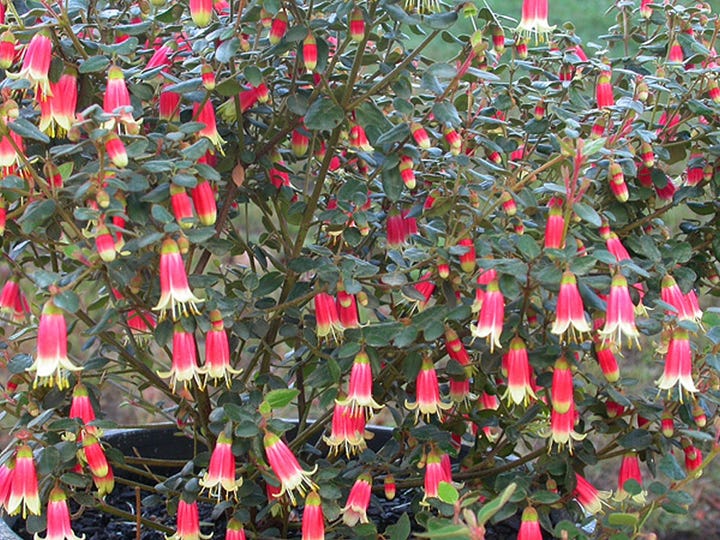
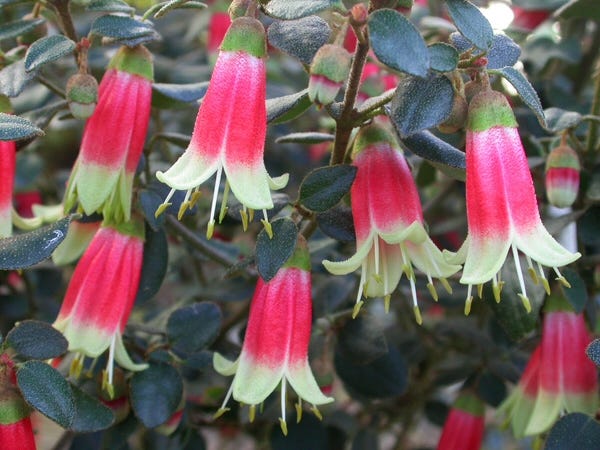
Correa, commonly known as Native Fuchsia, is one of the few native plants that flowers reliably through winter in the ACT and surrounding regions. Its small, tubular flowers (usually pink, red, green, or cream) provide a much-needed nectar source for birds and insects during the coldest months, especially for honeyeaters and eastern spinebills.
Correas are low-maintenance, frost-hardy, and drought-tolerant once established. They grow well in a variety of soils, including poor or sandy ground, and are suited to both gardens and revegetation projects. Most species prefer well-drained soil and will flower more consistently if they get morning sun and some shelter from heavy frost.
While not widely used as bush food, Correa has ecological value in supporting pollinators and providing low shelter for small birds. It’s a great choice for anyone wanting to encourage wildlife into the garden in winter. Prune lightly after flowering to maintain shape and promote bushier growth.
If you’re planting in July, look for nursery stock of Correa reflexa (common in southeastern Australia) or hybrid cultivars bred for local conditions. They’re also a good understorey plant beneath taller natives like banksia or eucalyptus.
Native Fauna - Eastern Grey Kangaroo
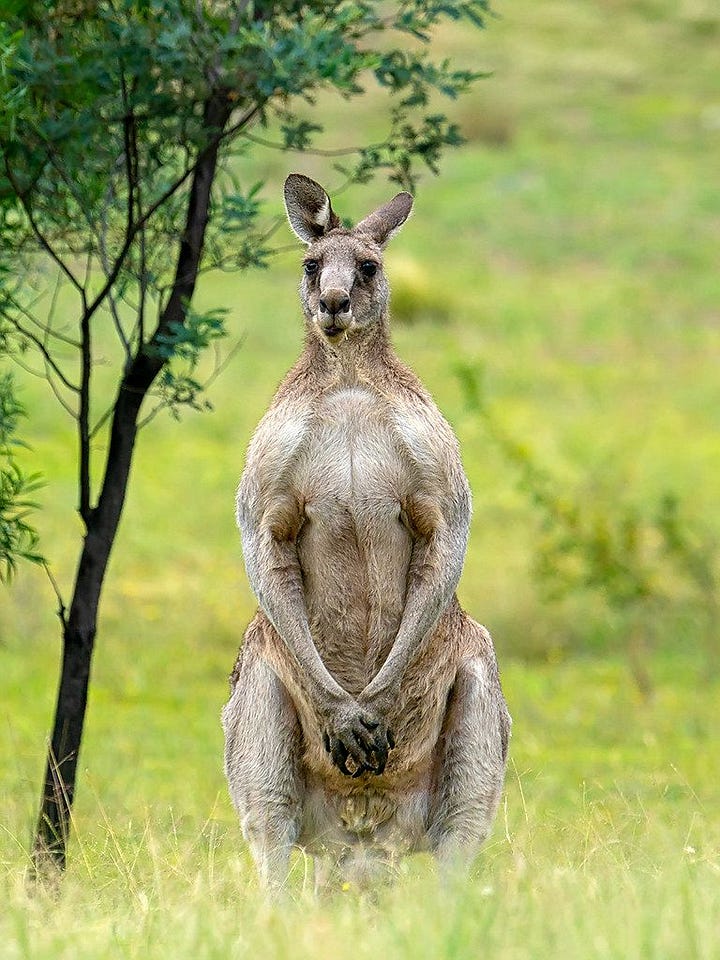
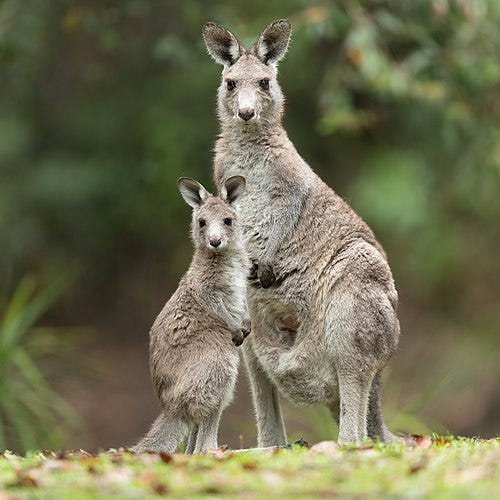
If you’ve driven through rural or bushy parts of the ACT in winter, chances are you’ve seen them—mobs of Eastern Grey Kangaroos (Macropus giganteus), grazing in open paddocks, moving quietly along treelines, or bounding across roads at dusk. July marks the height of their birthing season, when tiny joeys are born and begin their long development in the pouch.
These kangaroos are native grazers, playing a role in shaping grassland ecosystems by trimming vegetation and dispersing seeds. But in today’s landscapes, cleared of predators and full of irrigated pasture, their numbers have boomed. Overpopulation in some areas has led to:
Severe overgrazing, causing erosion and biodiversity loss
Road accidents, particularly at dawn and dusk
Starvation, when mobs exceed what the land can support
To address this, the ACT Government carries out seasonal culls, which aim to reduce population pressure in sensitive reserves and allow native plants and animals to recover. While controversial, these culls are guided by ecological science and performed under strict animal welfare guidelines.
Fertility control methods—like immunocontraceptive darts—are also being trialled in places such as Mulligans Flat. These offer promise for small, enclosed populations but are currently too costly and complex to use at scale across the region.
For the Ngunnawal people—Traditional Custodians of this land—and other local Nations, the Eastern Grey Kangaroo has long been a sacred and practical animal. It holds a place in Dreaming stories, spiritual practices, and social laws. Certain kangaroo mobs were considered totemic, meaning people had responsibilities to protect and honour them.
Every part of the animal was used with care:
Meat provided a vital source of protein
Skins were made into cloaks, worn for warmth and ceremony
Bones and sinew became tools and string
Teeth and claws were sometimes used in adornment or trade
Hunting followed strict protocols guided by elders—only certain individuals could hunt, only in certain seasons, and never in ways that would damage future generations of kangaroos or other species. These laws helped maintain the balance of Country for thousands of years.
Even today, the presence of joeys in winter is a seasonal signal: a sign that resources are shifting, and that the year is turning slowly toward spring.
What do you do if you hit a kangaroo?
Kangaroo strikes increase in winter. If you accidentally hit one, or see an injured animal:
1. Stay Safe – Pull over safely. Injured kangaroos can be dangerous if approached.
2. Call for Help:
ACT Wildlife: 0432 300 033 (24/7)
WIRES (NSW): 1300 094 737
Wildcare Queanbeyan: 02 6299 1966
RSPCA NSW: 1300 278 358 (for domestic or cruelty concerns)
3. Check the Pouch – If the animal is deceased and it’s safe to approach, check for a joey. Wrap it warmly and keep it quiet until help arrives. Don’t try to raise it yourself, joeys need specialist care.
In Season
Sources: Meadow and Widler Farm, What Cut Flower is That
Flowers finishing this month: None.
Flowers starting this month: Daffodils and Jonquils (Narcissus spp.), Daphne (Daphne odora).
Flowers continuing this month: Andromeda (Pieris spp.), Anemone (Anemone spp.), Button Bush (Berzelia lanuginosa), Blushing Bride (Serruria florida), Goldenrods (Solidago canadensis), Heath (Erica spp.), Icelandic Poppy (Papaver nudicaule), Lavender - French (Lavandula dentata), Snapdragon (Antirrhinum majus), Winter Rose (Hellebore spp.), Violet (Viola odorata).
Kitchen Garden
Source: Food Tree, Sustainable Table
The fruit and vegetables listed below are typically harvested in June in cool temperate regions of Australia. Some are in peak condition during winter and harvested fresh at this time, while others remain available thanks to their ability to store well through the colder months. Australia’s varied climate means that seasonal produce from warmer regions also reaches markets throughout winter, giving us access to a wide range of fresh, Australian-grown fruit and vegetables year-round.
Herbs - Coriander, ginger (stored), oregano, parsley, rosemary,
Vegetables - Asian greens (bok choy, choy sum, gai laan, wombok), avocado, brussel sprouts, cabbage, cauliflower, celeriac, daikon, Florence fennel, garlic (stored), horseradish (when leaves have died back), kale, kohlrabi, leek, mushrooms, onion (stored), parsnip, potato (stored), pumpkin (stored), shallot, silverbeet, spring onion, swede, sweet potato (stored), turnip.
Fruit - apples (bonza, braeburn, cox’s orange pippins, fuji, gala, golden delicious, granny smith, jonagold, jonathan, lady williams, mutso, pink lady, red delicious, snow, sundowner), feijoa, kiwi fruit, mandarins (imperial and ellendale), oranges (blood, navel and seville), pears (beurre bosc, Josephine, packham), persimmon, quince, rhubarb, tamarillo.
If you’d like to know what to plant in the kitchen garden this month, the Canberra Organic Growers Society (COGS) website has a useful Winter Planting Guide for our region.







Correa alba’s leaves can be drunk as a tea :)